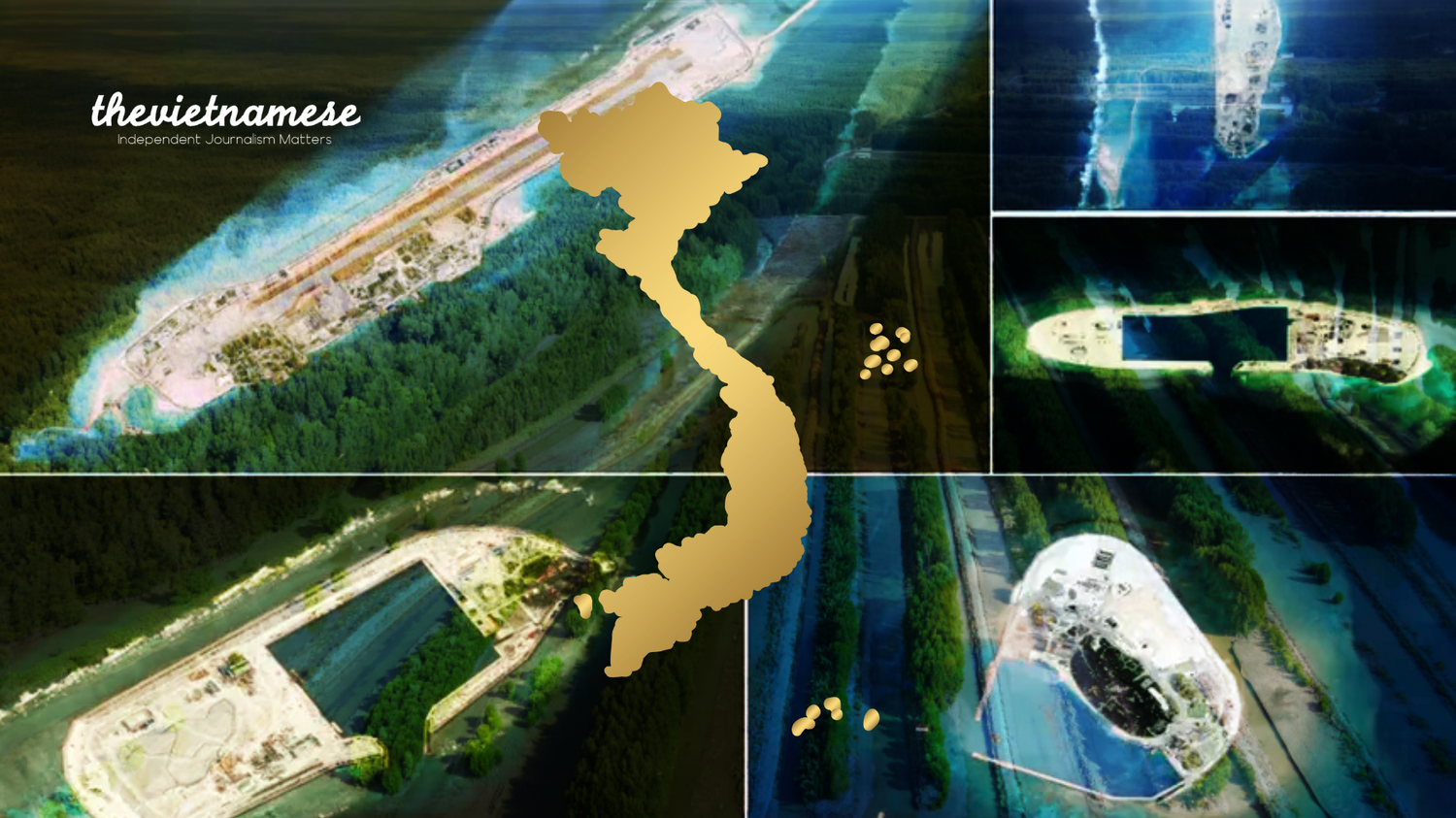At dawn along Việt Nam’s central coast, fishing boats drift back to shore, their bright blue wooden hulls etched against the pale horizon. Behind them, mountains rise steeply from the sea, forcing villages and cities to cling to narrow strips of land. This striking landscape—mountains pressing close to the water, an endless coastline bending into an “S”— is more than scenery. It is the foundation of Việt Nam’s foreign policy—and simultaneously a strategy, a constraint, and an opportunity.
This geographical reality, with its 3,000-kilometer coastline and long land borders, has always shaped the nation’s politics. But in the 21st Century, it has become a strategic compass that guides how Hà Nội balances a great-power rivalry, secures its sovereignty, and leverages its unique position into diplomatic capital.
Hard Geopolitics: Borders, Islands, and Deterrence
Việt Nam’s northern border with China is both a gateway and a warning. Geography locks the two countries into a relationship of deep economic interdependence and perpetual suspicion.
Mountain passes provide a natural defense, but they also limit Hà Nội’s room for maneuver, making hedging inevitable. The passes concentrate both trade and military movement into a few narrow corridors, and any disruption—whether from Chinese pressure or logistical constraints—quickly reduces Vietnam’s strategic options.
The strategy is to maintain trade routes with Beijing while quietly strengthening deterrence through modernized border defenses and diversified economic partnerships.
At sea, the geography is even more unforgiving. The South China Sea carries the bulk of Việt Nam’s exports and energy imports, but it is also the arena of its sharpest sovereignty disputes.
According to the Center for Strategic and International Studies, Việt Nam has expanded land reclamation across all 21 of its occupied features in the Spratlys. These reefs and sandbars, often dismissed as mere “rocks,” have become concrete markers of sovereignty. By fortifying these positions, Hà Nội is not seeking escalation but ensuring it cannot be sidelined.
Ports like Hải Phòng and Đà Nẵng reveal how trade and security intersect. They are vital hubs for economic growth and also critical in naval planning. Geography forces Việt Nam into a state of duality: every piece of infrastructure is both commercial and defensive.
In hard geopolitics, Việt Nam cannot match great powers ship-for-ship. It can, however, make its geography work as a deterrence, raising the cost of coercion and making its sovereignty undeniably visible.
Soft Geopolitics: Climate, Law, and Diplomacy
Yet, Việt Nam’s geography is not just a frontier of hard power; it also offers soft tools that turn vulnerability into influence.
The Mekong Delta, home to over 17 million people, faces rising seas, saltwater intrusion, and upstream dams that choke its rivers. For domestic policy, this is an existential threat. For foreign policy, it is leverage.
By positioning itself as a frontline state in the climate battle (the struggle against global warming and its impacts), Việt Nam amplifies its voice in global negotiations and attracts international assistance. Vulnerability is thus converted into moral authority—a claim that Hà Nội can use to demand climate finance and cooperation.
Việt Nam also wields international law as a strategic tool. Its deposit of straight baselines in the Gulf of Tonkin — a legal step under UNCLOS to define its maritime zones, was more than a bureaucratic filing; it was an act of “norm entrepreneurship”: the strategic effort to promote and entrench new international rules. By reinforcing UNCLOS, it set boundaries that others must now account for and respect, narrowing the space for disputes and bolstering its own legitimacy in multilateral forums.
Connectivity is another dimension. Geography places Việt Nam as a natural land-sea bridge between China and Southeast Asia. Investments in logistics corridors and cross-border trade turn this location into a diplomatic asset. Here, economic statecraft becomes a form of soft geopolitics, creating regional trust and binding partners into shared infrastructure. In this way, geography evolves from a passive location into an active bargaining chip.
Regional Contrast
Việt Nam’s strategy is unique when compared to its regional neighbors. Thailand’s geography offers strategic depth inland, making it less focused on maritime issues. Việt Nam, by contrast, is inseparably coastal. This makes Hà Nội far more vulnerable in the South China Sea but also more central to shaping its legal and diplomatic order.
The difference with the Philippines, another frontline state, is one of policy. While Manila has leaned heavily on its alliance with the United States to counter China’s maritime assertiveness, Hà Nội has pursued a more independent path: building islands, codifying baselines under UNCLOS, and hedging through multilateral forums.
This comparison highlights Việt Nam’s distinctive approach: neither purely alliance-dependent nor entirely isolated, but geography-driven and self-reinforcing.
Identity in International Relations
What unites these strategies is a pattern: Việt Nam hedges with geography. Hard geopolitics ensures deterrence through its borders, ports, and islands. Soft geopolitics expands its influence through climate diplomacy, legal entrepreneurship, and regional connectivity.
This dual strategy is a direct reflection of Việt Nam’s broader identity. It does not choose sides between Washington and Beijing. Instead, it uses its geography to buy time, build resilience, and create space for independent action. In international relations terms, Việt Nam is not simply a rule-taker. It is cautiously becoming a rule-shaper, embedding its geography into the regional order through both assertion and persuasion.
From Shoreline to Strategy
Back on the central coast, as fishermen mend their nets and children play along the tide, geography looks ordinary. But to Hà Nội’s policymakers, every border, reef, and river is a strategy in disguise; the country’s geography is a compass that points toward choices in security, diplomacy, and survival.
If Việt Nam can sustain its balance of hard presence and soft legitimacy, its S-shaped map will no longer be read as a constraint. It will be read as a declaration: that even a state pressed between mountains and sea can bend geography into power and turn vulnerability into influence.

